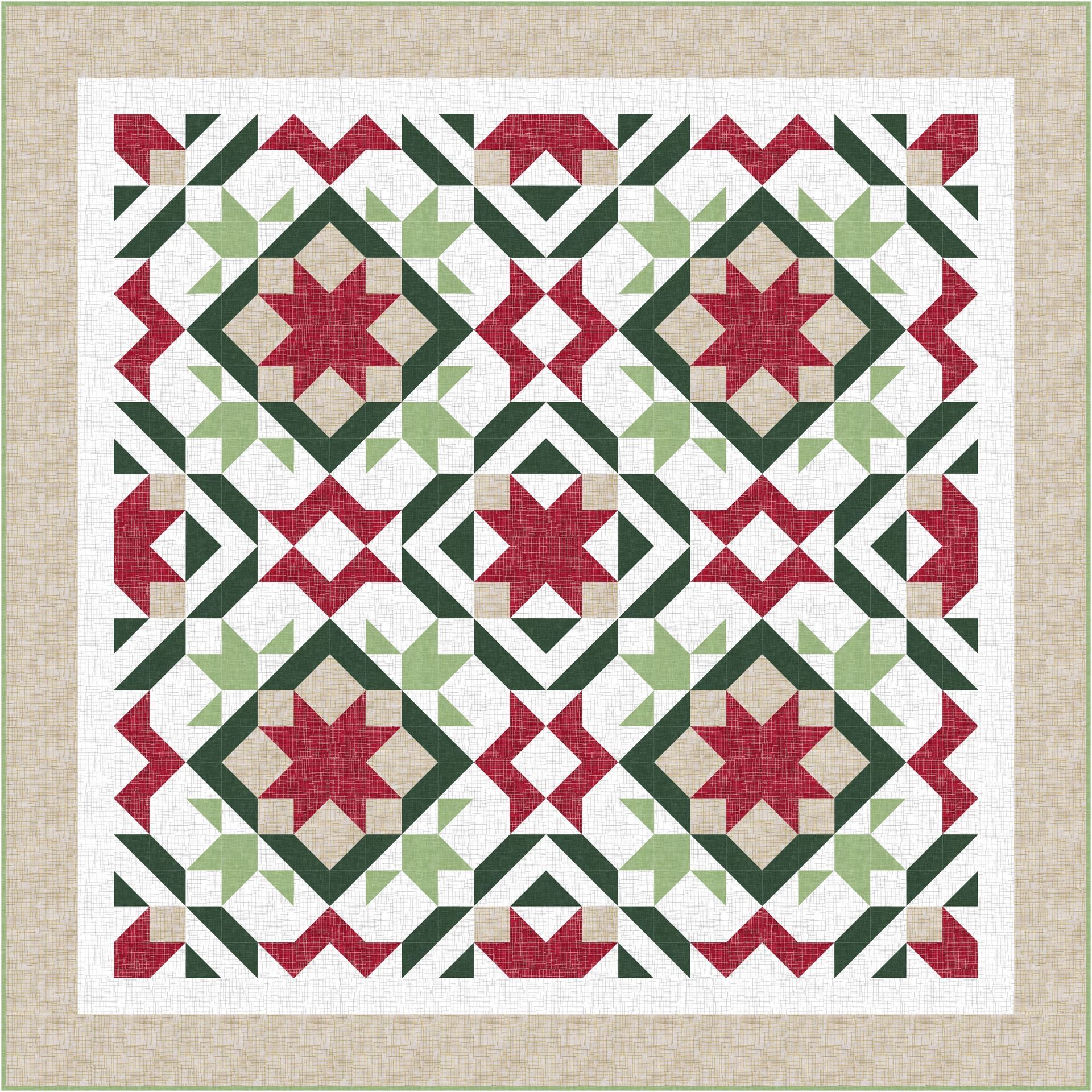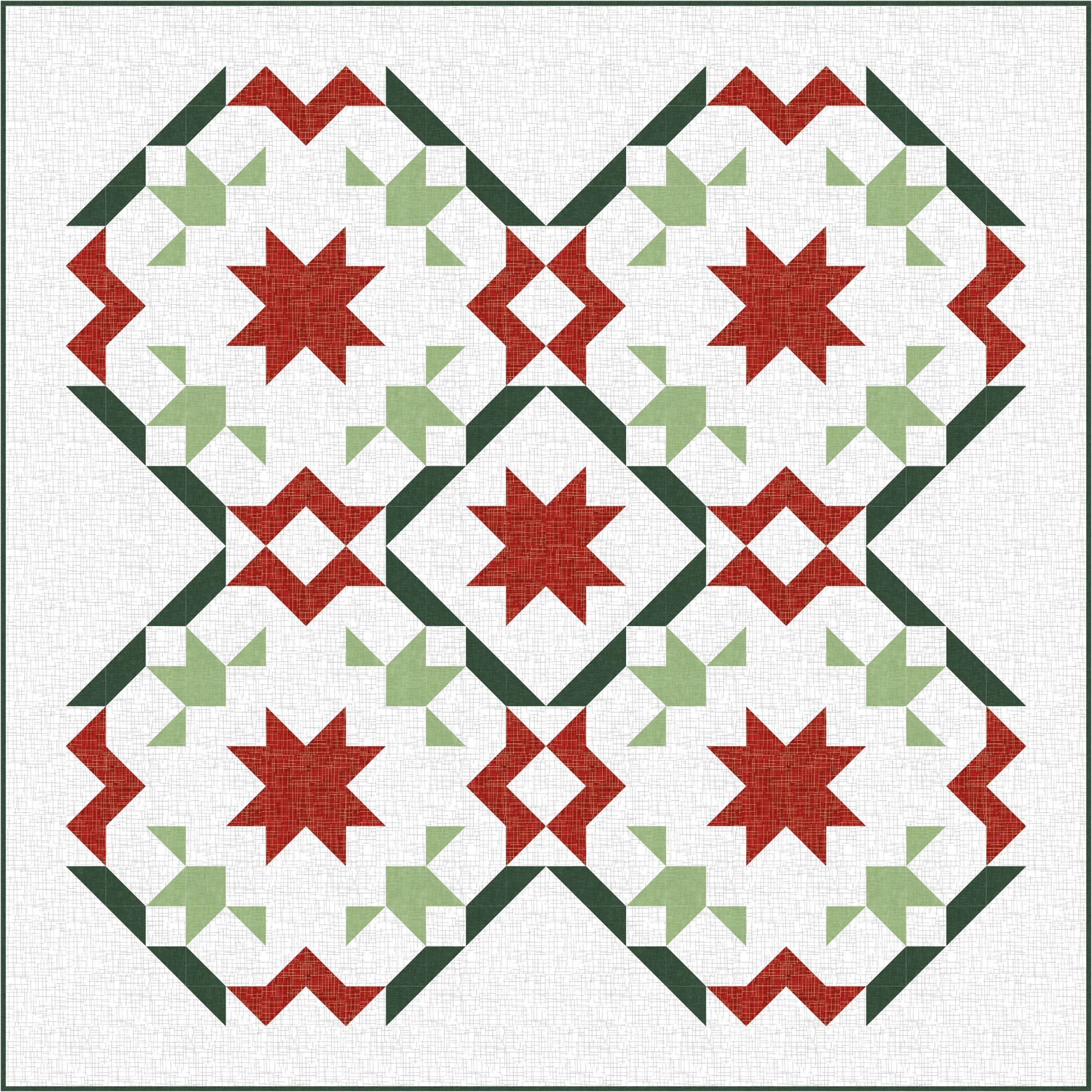Welcome back to our Summer Quilt-A-Long


We are onto part 6! Time is flying and I hope all are enjoying the fabulous sunny weather we are finally having.
If you missed any of the earlier parts we have covered so far:
- colouring our block design
- breaking the two different block options down into basic quilt units
- chain piecing those units with basic leaders & enders
- how many squares you can get from a fat quarter and a yard of fabric
- a scant ¼”seam and why it can be handy
- Half Square Triangles and Flying Geese 4 ways with tables for different sizes
- Chain Piecing a block and a whole quilt top
This week we are looking further at the sew and flip method and leaders and enders, and lastly making the middle sections of our block. If you missed the earlier parts of our QAL, you will find the instructions on our branch page at www.irishpatchwork.com.
The Sew and Flip method
W e looked at the sew and flip method in step 4 as one possible method to use when making Flying Geese. This method is very handy if you want to use different fabrics for the sky and geese.
e looked at the sew and flip method in step 4 as one possible method to use when making Flying Geese. This method is very handy if you want to use different fabrics for the sky and geese.
It can also be used for other shapes and is used a lot in the animal designs of Elizabeth Hartman and Lorna McMahon of Sew Fresh Quilts.

It works really well for the noses, ears and the spines of the hedgehogs in the cushions above. I had a lot of fun using it to design a baby quilt of a Koala for the River of Dreams Heart Quilts a few years ago.

It can be used for more than animal quilts and is a very handy thing to use to simplify the making of quilt blocks.
For example, in our Quilt-A-Long the sew and flip method could be used for these shapes outlined in black instead of Half Square Triangles (HST):
 This onl
This onl y works if your fabrics in the shape are the same. If you are working from scraps using different fabrics of the same colour, you will have to use HST.
y works if your fabrics in the shape are the same. If you are working from scraps using different fabrics of the same colour, you will have to use HST.
Shape 1 as Sew and Flip Method
Shape 1 covers 4 squares, 2 rows and 2 columns. In our QAL we are making a 24” block so each square is 2”. Shape 1 then needs to finish up at 4” square. To make it as 1 piece we need to treat it as a Half Square Triangle (HST) with the tips added on as a sew and flip unit.
 Remember to make HST two at a time we cut two squares Finished Size +1” and 8 at time we double it (See part 3 of this QAL for details on how to make HST). E.g. for a 4” finished HST we start with a square of 5” for both fabrics for two at a time or 10” squares for 8 at a time. You will also need 2.5” squares for the corner fabrics.
Remember to make HST two at a time we cut two squares Finished Size +1” and 8 at time we double it (See part 3 of this QAL for details on how to make HST). E.g. for a 4” finished HST we start with a square of 5” for both fabrics for two at a time or 10” squares for 8 at a time. You will also need 2.5” squares for the corner fabrics.
 When you have your HST made,
When you have your HST made,  add a 2.5” square to the corner. Mark a diagonal line from corner to corner as shown in blue. Sew a scant ¼” seam along this marked line. Cut ¼” away from the sewn line marked above in orange. Press and flip open. Repeat for the other side.
add a 2.5” square to the corner. Mark a diagonal line from corner to corner as shown in blue. Sew a scant ¼” seam along this marked line. Cut ¼” away from the sewn line marked above in orange. Press and flip open. Repeat for the other side.
You will have some scraps to throw away or keep for leader and ender projects. More on those below.
Shape 2 as Sew and Flip Method
This second shape is very like a Flying Goose unit. You start off the same way as making a flying goose. When you add the second square you mark the diagonal differently, so it flips open towards the bottom right instead of the top right to make a diagonal slanting piece.

If you want it to slant in the other direction you will have to make another with the squares positioned like this. 
Leaders and Enders
We looked at leaders and enders in basic terms earlier, as scrap fabric that could be used to start a chain of piecing, but it can be used to sew your offcuts from the sew and flip units into Half Square Triangles (HST) for a scrappy project later on.
If HST are not your thing, you can make a leader and an ender project with squares. 
Left over 2.5” binding strips or jelly rolls can easily be cut to 2.5” squares as can spare charm squares.
Square blocks like these make for a nice and simple quilt that can be a fun way to use up scraps.
Bonnie Hunter has written two books on leader and ender projects and features these on her blog Quiltville. Adventures with Leaders and Enders and More Adventures in Leaders and Enders can be found on Amazon and there are fun Pinterest groups that do challenges using them here and here. Some are very complex, but I guess if you are organised and well prepared it can make short work of repetitive sewing.
Quilt-A-Long
So, onto our QAL! In the last part we completed the corners of the blocks. This week we are onto the middle sections.
Block 1:
 Our B sections are 4 rows by 4 columns or a 16 patch but made up of a mix of flying geese and HST.
Our B sections are 4 rows by 4 columns or a 16 patch but made up of a mix of flying geese and HST.
Lay out your pieces in rows and sew toghether as per the diagram below: 

Then sew the rows together. Make 4 for each block, 16 in total.
Block 2:
Our B1 sections are also 4 rows by 4 columns or a 16 patch and made up of a mix of flying geese, HST and squares.

To start with sew the HST to the Background squares as shown.
sew the HST to the Background squares as shown.
Then layout your pieces, as shown below, and sew togheter in rows.

Sew the rows together. Make 4 for each block, 16 in total.
Please join us in two weeks time, when we look at star blocks and complete our block.
Thanks for joining us,
Stay safe and happy sewing!
©Ruth Bourke
Mid-Western Branch